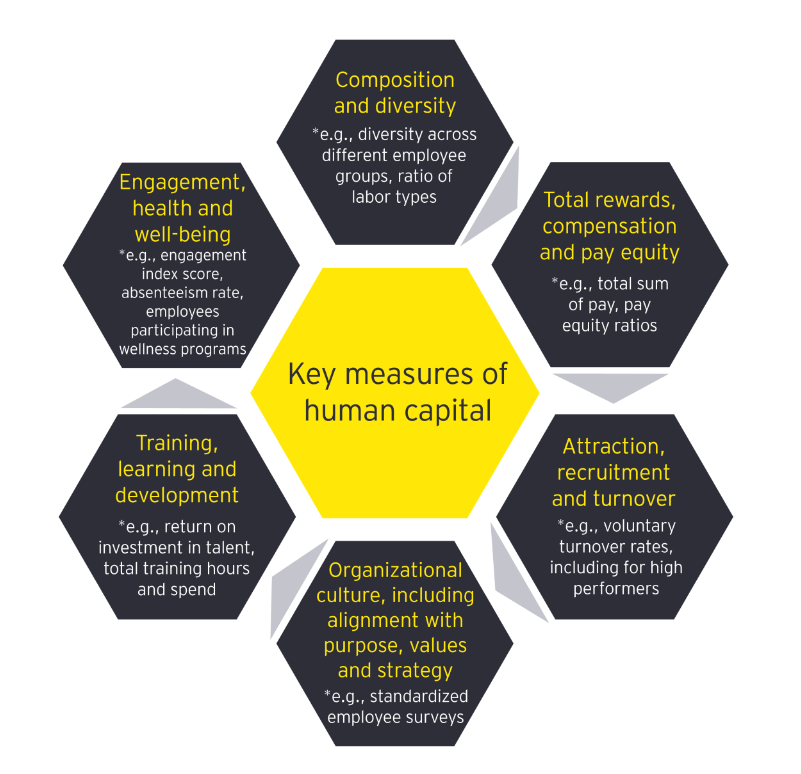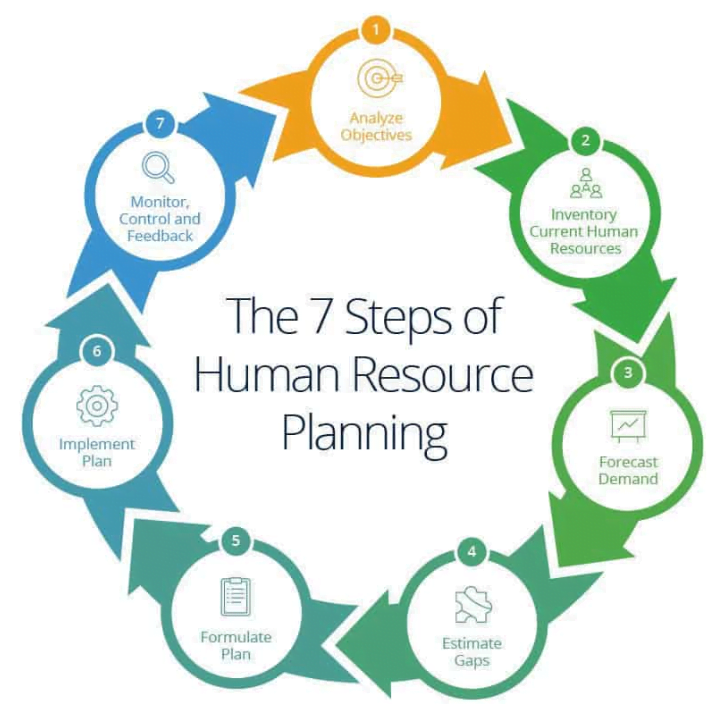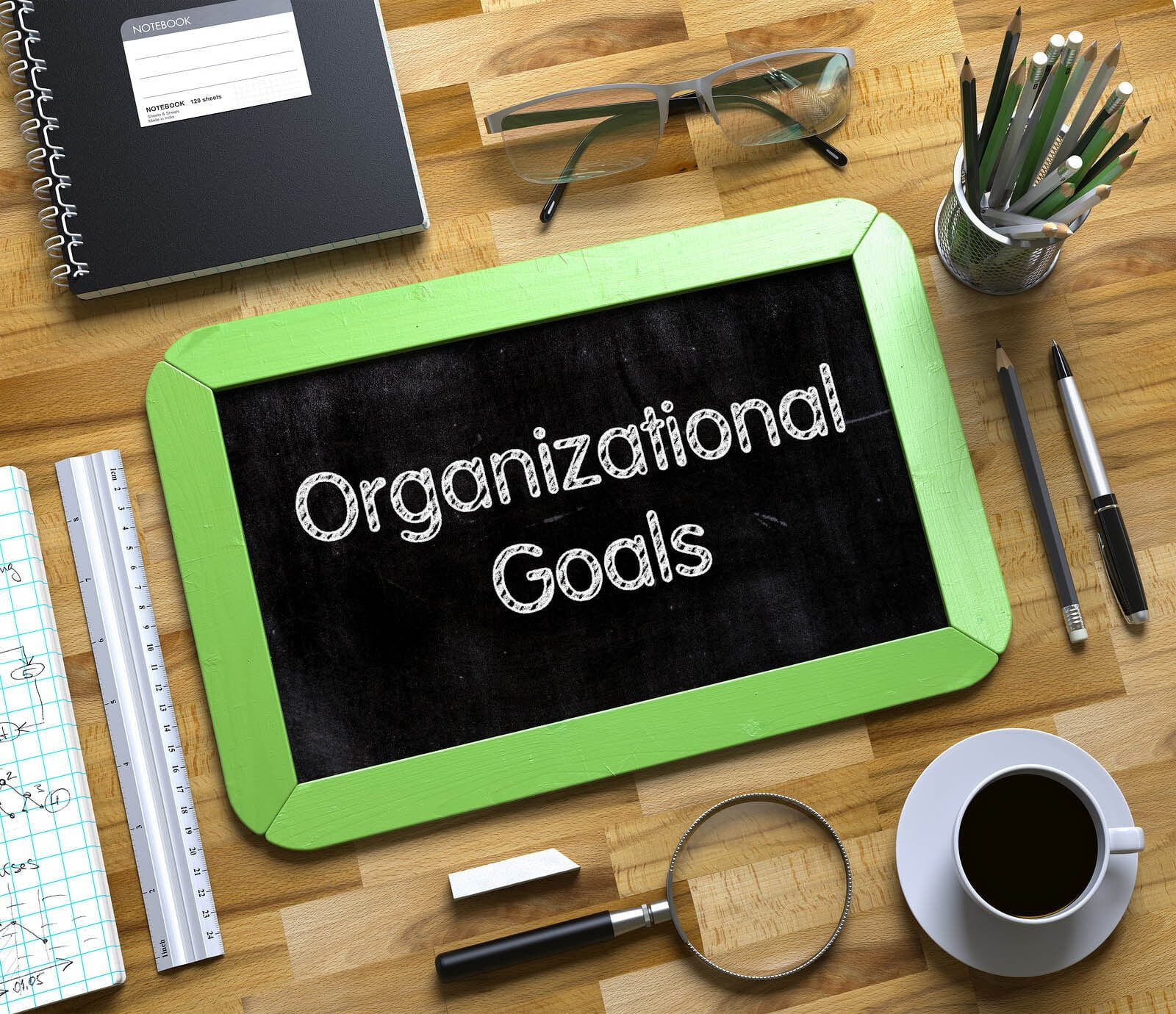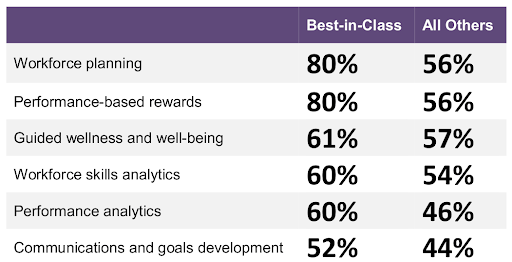Organizations seeking to assess and align their human capital with their business strategy rely on a range of metrics – such as recruitment, compensation, composition, turnover, culture engagement, etc. – as part of a strategic human resource planning (HRP) process. In recent times, investor groups with over $14 trillion in assets under management have been campaigning for a regulatory mandate that would provide similar insights to shareholders and investors as well.
Table of Contents
Toggle
(Image source: Ernst & Young)
In February this year, the House Financial Services Committee approved the Workforce Investment Disclosure Act requiring companies to share more granular metrics about a company’s human capital management practices, policies, and performance.
Why all this sudden interest in granular HR metrics when currently, businesses are only required to provide a headcount? The answer is as much about the rising investor interest in the correlation between human capital and business performance as it is about the strategic importance of human resource planning.
The Market Value of Human Capital
For a long time, financial performance was the main predictor of market value. Today, it is estimated that intangible assets, including human capital and culture, account for as much as 52% of a company’s market value, according to Ernst & Young.
Many Fortune 100 companies already provide voluntary disclosures regarding their approach to the management and governance of human capital. But an Ernst & Young’s review of these disclosures produced two key observations – 1). Most only highlight general efforts in the area of human capital management without presenting quantifiable performance metrics, and 2). the depth and clarity of disclosures do not adequately reflect the exact nature of human capital governance.
Going forward, it does look like a company’s approach to human capital management could become a touchstone for investors to assess future performance and value. Meanwhile, companies with progressive and proactive human resource management (HRM) strategies are already applying processes like human resource planning to ensure that their human capital composition, competencies, and capabilities are perfectly orchestrated to realize the business’s strategic future objectives.
But what is human resource planning exactly?
What Is Human Resource Planning?
HRP, or workforce planning, is a continuous process of systematic planning that enables organizations to achieve optimum use of their human capital. It is a proactive, executive, and descriptive approach to forecasting the future workforce needs of a business – assessing the gap between availability and requirements and formulating strategies to address the deficit.
There are four key characteristics of an effective human resource planning process.
- HRP must be a cross-functional process, requiring HR leadership and top management to work together to clearly define current and future business objectives.
- It has to be an ongoing process, rather than a one-time effort, to map the availability, suitability, and productivity of a company’s human resources and ensure ready access to the right people with the right skills at the right time.
- The process needs to be flexible enough to address short-term staffing challenges and adapt to business dynamics as they evolve.
- It has to ensure the best fit between employee skills/capabilities and role requirements so that organizational objectives are met.
The Benefits of Human Resource Planning
As evidenced by the growing investor interest in HR metrics, a company’s approach to human resource planning and management is intricately linked to its value. Rather than being a process that allows businesses to plan for the future, a well-designed and implemented human resource planning initiative can help companies continually adjust, adapt, and advance their HR strategies for optimal outcomes.

A human resource planning process generates vital data that can be used to transform the entire HRM practice across all functions – from recruitment to employee experience and retention. HR leaders are now able to assess the current productivity and performance of the entire workforce and make decisions that will focus and optimize workforce effectiveness. Human resource planning provides them with the insights required to deliver learning and development programs specifically designed to address prevailing workforce needs. A better understanding of factors like employee satisfaction, engagement, and experience allow HR to define the best strategies required to manage attrition, reward, and retain high performers and attract the right external talent.
Human resource planning can also have a significant impact on the long-term growth of a business. By taking a proactive approach to ensuring the right talent acquisition and management strategies, HRP allows business leaders to deal effectively with contingencies, such as sudden changes in market/competitive trends, and growth opportunities, such as diversification or expansion.
Finally, human resource planning allows organizations to cope with systemic changes driven by radical shifts in social, technological, or legislative trends, including the changing demographics of the workforce, the impact of AI/ML, and emerging legislation like the Workforce Investment Disclosure Act.
The 7 Stages of Human Resource Planning

Image Source: SmartSheet
The human resource planning process progresses as a sequence that typically comprises the following stages.
- Define Organizational Goals and Objectives
The fundamental purpose of HRP is to ensure that an organization’s human resources are aligned, both quantitatively and qualitatively, with the strategic objectives of the business. It is therefore imperative that the process itself is founded upon the current and future ambitions of the business, defined precisely and unambiguously in terms of strategies, performance metrics, and expected outcomes. All external factors that could impact the business – including macroeconomic indicators, sector/industry trends, competitive dynamics, regulatory shifts, socio-political shifts, etc. – also have to be taken into account.

As is only to be expected, this is a complex and comprehensive exercise requiring cross-functional multi-stakeholder engagement helmed by the C-suite. There has to be thorough due diligence across the board, as any approximations and assumptions introduced into the process at this stage could have an adverse ripple effect on all other aspects of the process.
- Audit the Current Workforce
With a clear definition of the organization’s strategic direction, the proposed course of action, and the key milestones, the next step is to build an in-depth taxonomy of current employees.
This must capture all relevant employee information – from a department-wide headcount to individual attributes such as demographics, experience, skills, competencies and knowledge, compensation, performance trajectories, employee engagement, and satisfaction, etc.
Compiling enterprise-wide data about capabilities, performance, and potential by business, function, and role allows HR leaders to take immediate action to address any critical performance gaps as they lay the groundwork for proactive planning for future HR needs.
- Forecast Future Demand
Combined with stages 1 and 2, this step completes the evaluative trio that together will define how the human resource planning process will move forward. Evaluating future demand against organizational ambitions (stage 1) and current human resource capabilities (stage 2) allows HR businesses to identify the gaps (stage 4) that have to be addressed for the business to be future-ready.

Forecasting workforce demand in these times of economic uncertainty and technological disruption may not be the easiest thing to do. One emerging technique is workforce shaping – a scenario planning-based approach that accounts for a future where humans and machines coexist in the workplace. The idea is that the traditional approach to workforce planning – i.e., extrapolating from current workforce data to fulfill future demand – may not be enough. With workforce shaping, businesses define multiple potential future business scenarios and then work back to estimate the right workforce composition for each particular eventuality.
- Analyze the Supply-Demand Gap
Having determined current capabilities as well as requirements for delivering future business objectives, HR leaders are now in a position to understand the location, characteristics, and magnitude of the competency gaps across the organization. A qualitative understanding of the gap between reality and requirements will greatly influence the specific strategies that can be used to address deficiencies. For instance, some shortcomings could be addressed by focusing solely on training and upskilling rather than external recruitments, or underutilized resources in some areas could be better deployed to more productive activities. Gap analysis gives businesses key insights needed to develop a holistic action plan that matches the most appropriate resolution strategies for each situation.
- Create an Action Plan
The action plan addresses the gaps in a company’s workforce that prevent it from coping with the future demands of the business. Based on the conclusions derived from the gap analysis, there is a range of strategies available for HR – including recruitment, restructuring, training and development, interdepartmental transfers, outsourcing jobs, collaboration enhancements, promotions, succession planning, compensation and benefits management, freelance and contract roles – to address a diverse mix of scenarios.

However, not all gaps are the same as some might pose a more significant business risk than others. It is, therefore, essential to classify competency gaps in terms of their criticality to business continuity and performance. There may also be gaps that don’t fall into any neat classification of conventional strategies and may require more creative solutions. The workforce action plan must clearly define the areas that need to be addressed, the priorities with which they will be addressed, and the strategies that will be deployed to do so. It is also important, of course, that the plan includes specific, measurable, achievable, realistic, and time-based metrics for resolving each scenario.
- Implement the Plan
This is often the most challenging part of the human resource planning process for many organizations. Even the best action plans are only as good as their implementation, and the HR team has to ensure that there is buy-in from the C-suite. As with any change management program, there will also be some resistance from the employees. It is, therefore, important to have a communication strategy in place to inform the workforce about the benefits of the program, as well as for the individual, the departments and the organization as a whole.
- Monitor and Review
This is the stage that enforces the continuous nature of human resource planning. All key metrics defined in the action plan have to be continuously monitored, reported, and reviewed to confirm that the organization is indeed moving closer towards the preferred strategic end state. Continuous improvement is the hallmark of any efficient HRP process, and the focus has to be on iterating strategies until they deliver pertinent outcomes.
HRP in the Digital Age
This, then, is the broad process framework that most HR teams rely on for human resource planning. Though the framework itself has not changed much in the digital age, the techniques used to collect and analyze process data have become more sophisticated – at least among the best in class.
According to a 2019 study from the Aberdeen Group, 46% of companies still manually link disparate datasets for workforce planning analysis – either to retain control over HR data or to manage HR spend. Whatever the reason, the result is that a lot of time is wasted cross-referencing datasets at the risk of introducing human error into this critical process.

(Image source: Aberdeen Group)
The best-in-class, however, prioritize automation to link disparate datasets with workforce planning functions, like workforce forecasting, headcount analysis, and HR resource allocation, topping their list of priorities. By using an agile analytics engine to link all data, these companies have been able to unify human resource planning objectives, accelerate planning schedules, and reduce data aggregation errors. This analytical foundation even allows best-in-class performers to test multiple ‘what-if’ scenarios, involving iterations of employee headcount and skills requirements, to reduce performance disruptions and get the right talent to the right place at the right time.
According to Gartner, building workforce planning capabilities is vital for HR, especially as only half of HR leaders are confident in executing this critical function, and only 8% believe that they are getting sufficient ROI from workforce planning.
However, Gartner forecasts that 60% of global mid-market and large enterprises would have invested in a SaaS HCM (Human Capital Management) suite by 2025. This shift to the cloud will make it much easier for HR departments to leverage the power of more advanced AI-based analytics and to manage HR spend.
Today, cloud-based HCM suites like SAP SuccessFactors already offer comprehensive workforce planning capabilities that include strategic workforce planning, operational headcount planning, and financial modeling & impact analysis.

Final Thoughts
Human capital is rapidly emerging as a critical metric for enterprise value. In fact, there is a global movement for more granular human capital disclosures that will enable investors to make more informed decisions about the performance, growth, and value of a company. Progressive organizations that pay more than lip service to their HR assets have long relied on human resource planning to assess the value of their human capital and to ensure that it is aligned with the tactical and strategic performance objectives of the business. All this investor interest in human capital management and governance only emphasizes the fact that creating business value in a knowledge economy has to begin with a keen understanding of the value of human capital.
Summary:
What is Human Resource Planning?
Organizations seeking to assess and align their human capital with their business strategy rely on a range of metrics – such as recruitment, compensation, composition, turnover, culture engagement, etc. – as part of a strategic human resource planning (HRP) process. For a long time, financial performance was the main predictor of market value. Today, it is estimated that intangible assets, including human capital and culture, account for as much as 52% of a company’s market value, according to Ernst & Young. HRP, or workforce planning, is a continuous process of systematic planning that enables organizations to achieve optimum use of their human capital. It is a proactive, executive, and descriptive approach to forecasting the future workforce needs of a business – assessing the gap between availability and requirements and formulating strategies to address the deficit. There are four key characteristics of an effective human resource planning process. 1. HRP must be a cross-functional process, requiring HR leadership and top management to work together to clearly define current and future business objectives. 2. It has to be an ongoing process, rather than a one-time effort, to map the availability, suitability, and productivity of a company’s human resources and ensure ready access to the right people with the right skills at the right time. 3. The process needs to be flexible enough to address short-term staffing challenges and adapt to business dynamics as they evolve. 4. It has to ensure the best fit between employee skills/capabilities and role requirements so that organizational objectives are met.
FAQ
A: Human resource planning is forecasting an organization’s future workforce needs and ensuring it has the right people with the right skills and positions at the right time. It is essential because it allows organizations to align their workforce with strategic goals, anticipate talent gaps, optimize resource allocation, and effectively manage workforce changes.
A: Human resource planning typically involves several steps. These include assessing current workforce capabilities and future needs, analyzing internal and external factors influencing the workforce, identifying skill gaps, developing recruitment and retention strategies, implementing training and development programs, succession planning, and regularly reviewing and adjusting the plan based on changing circumstances.
A: Implementing human resource planning offers several benefits. It helps organizations identify and address skill shortages or surpluses proactively, ensuring the right talent is available when needed. It enhances workforce productivity, engagement, and satisfaction by aligning individual and organizational goals. Human resource planning also minimizes recruitment and training costs, reduces employee turnover, and improves organizational performance and competitiveness.
A: Organizations may encounter various challenges when implementing human resource planning. These can include uncertainty in predicting future workforce needs, difficulty obtaining accurate data for analysis, resistance to change from employees or management, limited resources for training and development, and the need to integrate the planning process with other organizational strategies. Overcoming these challenges requires effective communication, stakeholder buy-in, data-driven analysis, and adaptability.
A: Human resource planning plays a vital role in achieving strategic organizational goals. It ensures that the right people with the required skills and competencies are available to support the organization’s mission and objectives. Organizations can identify talent gaps, develop recruitment and retention strategies, foster leadership development, and create a high-performing and adaptable workforce by aligning workforce planning with business strategies. Human resource planning also supports organizational agility, innovation, and the ability to respond effectively to changes in the external environment.





